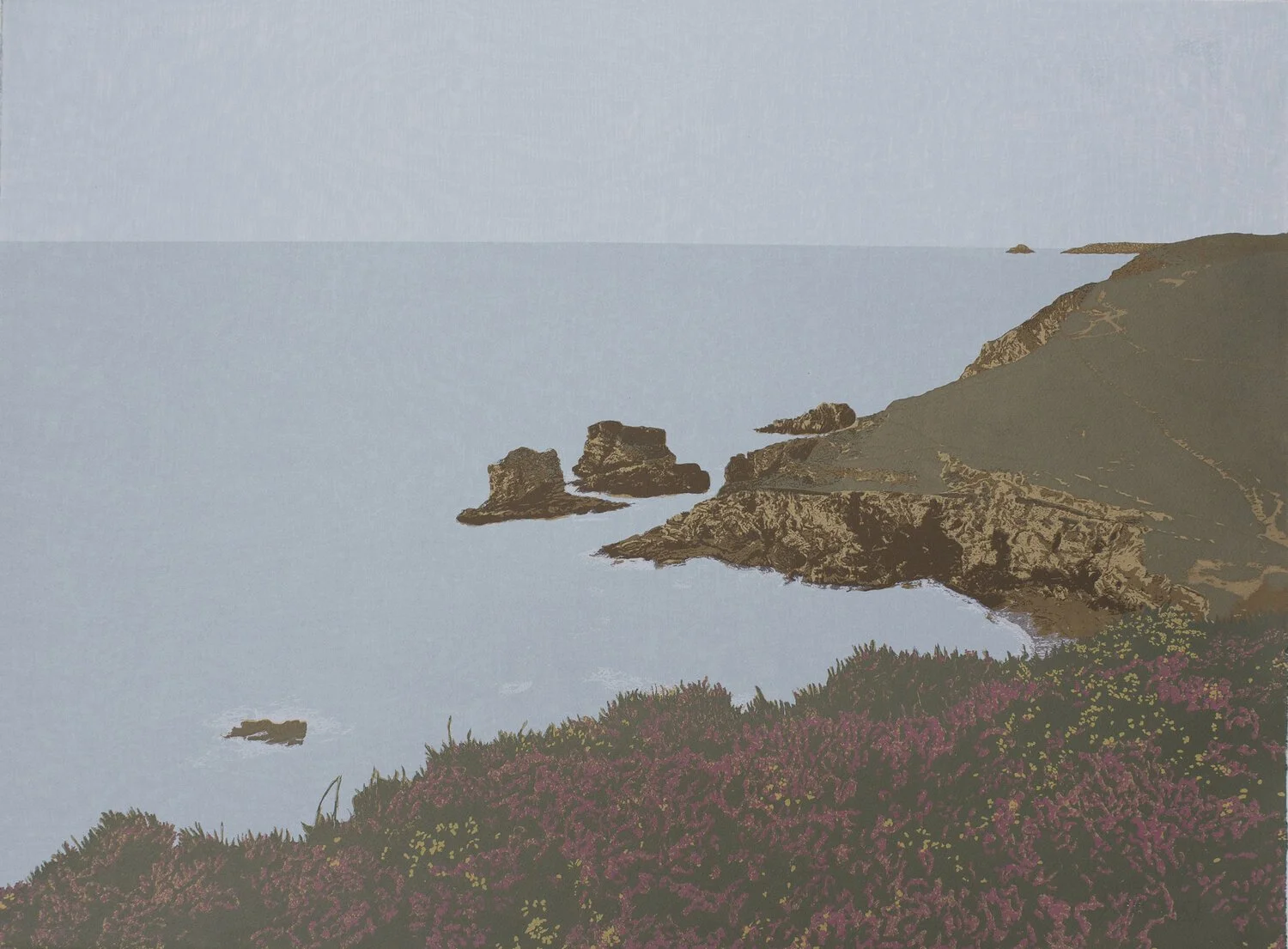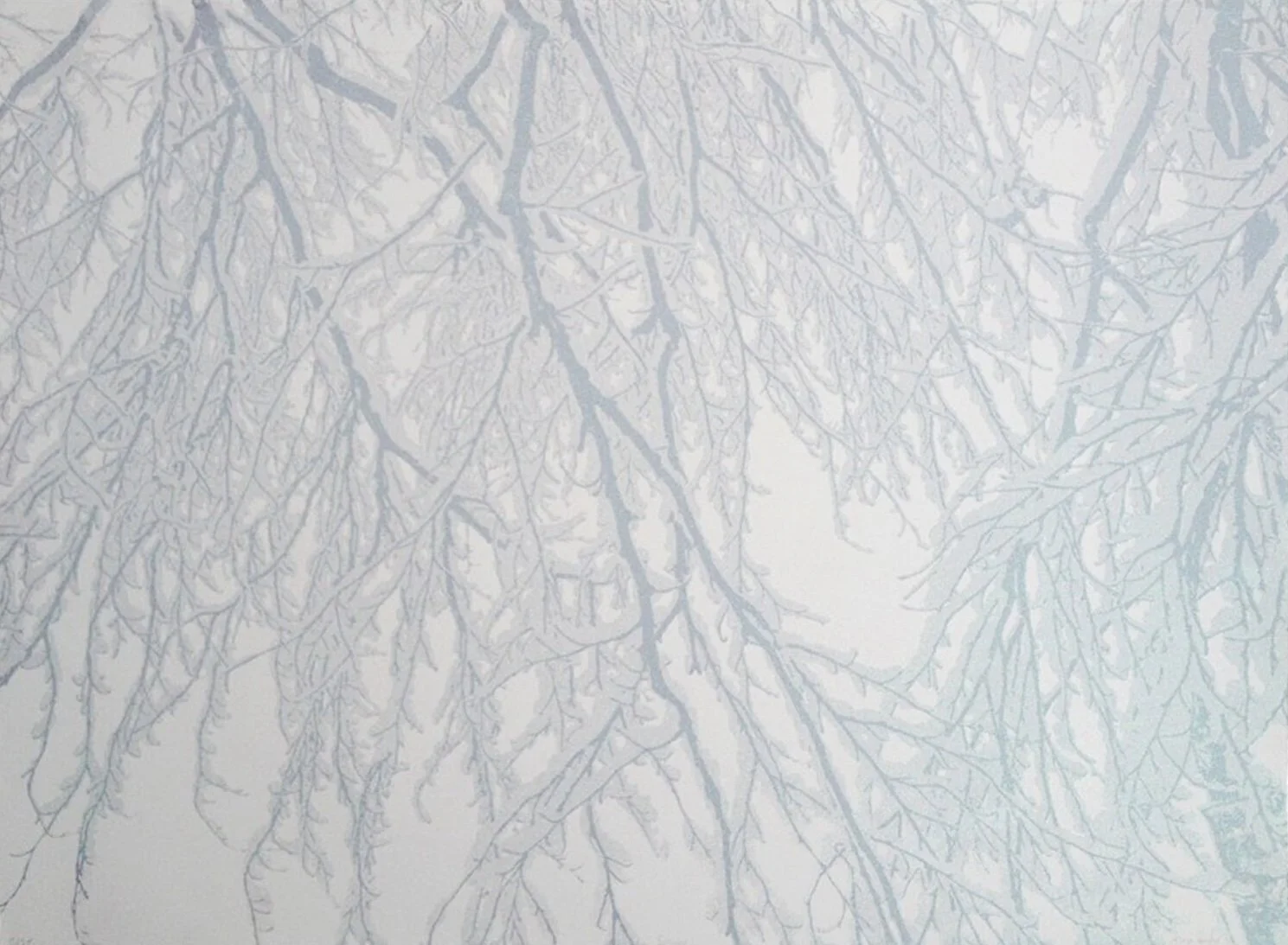SNUGGLE UP | ANNA HARLEY
We are thrilled to welcome Anna Harley to the Artsnug Artist family this week. A Bristol based artist, Anna’s screen prints have a distinctive, stark freshness and graphic beauty. Transporting us to places like the rugged coastal pathways of Cornwall and the forests of Sweden - we are enchanted by her evocative landscapes.
We snuggled up with Anna to learn more about her journey towards becoming a full time artist and the inspirations which drive her practice…
Please tell us a bit about yourself and the journey you have taken to becoming an artist.
I did not develop a passion for print making until my late thirties, though I have always enjoyed making things and been ‘good with my hands’. Artist is my third career! Following my first degree, I joined Laura Ashley as a retail management trainee and ran the Bristol, Clifton branch until the birth of my first child. Laura Ashley was a wonderfully creative company to work for and I learnt a lot about style, fashion (of the flowery puffed sleeve variety), art history and interior design, while I worked there. I then re-trained as an Early Years Teacher and, contrary that I am, spent several years teaching Mathematics part-time in a secondary school. During this time I was also learning about art through various classes and part-time art courses. Initially I drew and painted at evening classes as something to do for myself, away from my two young children.
Once my children had started school, I began to study art during the day, initially with an Art Foundation course at the Bristol School of Art. This was a great all-round introduction to the various media artists work with. I can remember being told we were not there to polish our stones, but to explore as many different media and techniques as possible. At that time, Bristol School of Art offered all their students free, optional life drawing classes and these were invaluable for honing our observation and drawing skills.
This led naturally to an HNC where I was introduced to a variety of different print making techniques, such as cyanotype, screenprint and woodcut processes. My great grandfather’s sister was a successful artists who made woodcut prints in Sweden and, influenced by her, I gravitated towards the woodcut process. Things just clicked with print, I loved working with these processes.
On completion of the HNC, I moved on to do an MA in print, which is where I eventually shifted my focus to screen printing. I loved the way you could screen print with anything fine enough to push through the mesh on a screen and on to any substrate. With this medium I could print dyes on fabric, glazes and oxides on ceramics and of course, acrylic inks on a variety of papers. I have even printed digital images of the floating harbour in Bristol with the mud from the river Avon.
Finally, I found Spike Print Studio. Joining initially as a student, I am now a key-holder member and haven’t looked back since. I have a studio in my home where I prepare and store my work and print at Spike, using the specialist printing equipment there.
Tell us about your studio practice. How do you create your artworks?
I use a combination of drawing, digital photography and objects directly exposed on the screen to create the individual layers in my prints. I enjoy the tension these different sources create in my finished work. When making a new print, I try to stay open minded about how the finished work will look, to allow the print to make itself - print is an extremely process led way of making art and allowing the unexpected to happen and taking advantage of these happy accidents allows the work to stay fresh and exciting. I love the drama of proofing a print; when suddenly everything comes together with the final layer of ink - and the print starts to sing.
How do you find inspiration for your art and what sparks the beginning of a new piece?
Walking, being out in the landscape, a feel for a place. I often work from photographs that I take on my iPhone while out walking in dramatic landscapes. During the period of Covid lockdowns, when foreign travel was difficult, I did a lot of walking along the Salt Path (the Cornish Coastal paths) and this resulted in a series of prints based on these experiences.
We love the different textures in your artwork – from fabric-like marks to wood grain. How do you create these?
I started as a large format woodcut printmaker and loved the wood grain but disliked the physical demands of cutting negative spaces from wood. Exposing chiffon to screens creates a texture similar to woodgrain that adds an element of chance to the image and removes the flat layers of colour.
Many of your screen prints take us to Sweden – what is your connection to this landscape?
Sweden is where my Mother’s family originate. I own a summer house near my Swedish relatives in Kopparberg and stay there for a few weeks most years. Coming from a fairly nomadic family, (by the age of six I had lived on three different continents), Kopparberg has come to represent one of the few constants in my life. I have made many prints inspired by the forests and lakes from this area in Sweden.
What do you hope that your work communicates to the world?
I am often told that my work is very peaceful and evokes a sense of calm. I use a lot of silver and gold pigments, mixing these with the other colours I use create a muted pallet.
Which other styles, artists or artworks have influenced you?
I love visiting exhibitions and art galleries, so an honest answer would have to be lots of artworks continually influence me! Early influences would have to be the works of my Swedish relative Maya Fjæstad and her husband Gustav Fjæstad that hung on the walls of my relatives’ houses when I grew up. They were very inspired by the work and style of Japanese printmakers and people often comment that there is something oriental in my compositions. It’s like this style is in my bones and has filtered down by a process of osmosis. My relatives formed an artist community by the shores of Lake Raken in West Sweden, very similar to the Bloomsbury set formed in England around the same time.
Working at Spike Print Studio, where I am now also Chair to the Board of Trustees, means that I am surrounded by a community of printmaking artists while I print. I really enjoy the collaborative nature of printmakers. The nature of print means that we need to share equipment and facilities and printmakers provide a great platform to learn from and talk through new works.
For our Happy Place exhibition, you shared two beautiful pieces inspired by the Caribbean. What other spaces bring you inspiration?
Any dramatic landscapes, like the Cornish Coast I mentioned above and Cheddar Gorge near to where I live in Bristol. In 2019 I took a trip to the Annapurna region in Nepal. We spent a week trekking up the Gandaki river valley to reach Annapurna Base Camp in the Himalayas at 4,130m. The drama and scale of the region was awe inspiring and resulted in several very large scale prints, one of which sold out at the Royal Academy Summer Exhibition a few years ago. I have been lucky to be selected and show work six times at this Summer Exhibition (alas not this year) and it’s a fantastic event to take part in.
If you could choose three pieces of work from Artsnug to ‘snuggle up with’ which would they be?
Clare Halifax’s series from Kew are exquisite! I am very familiar with Clare’s work, as we completed our MA’s at UWE together in 2009. I love the variety of marks used in preparation of her positives for printing and the textile design elements in her backgrounds. I also love the pared back simplicity of Anna Macdonald’s paintings, and when visiting the gallery last week Sarah Barrett’s ‘Spring Shimmer’ really struck a chord with me.
























limited edition of 30 screen print